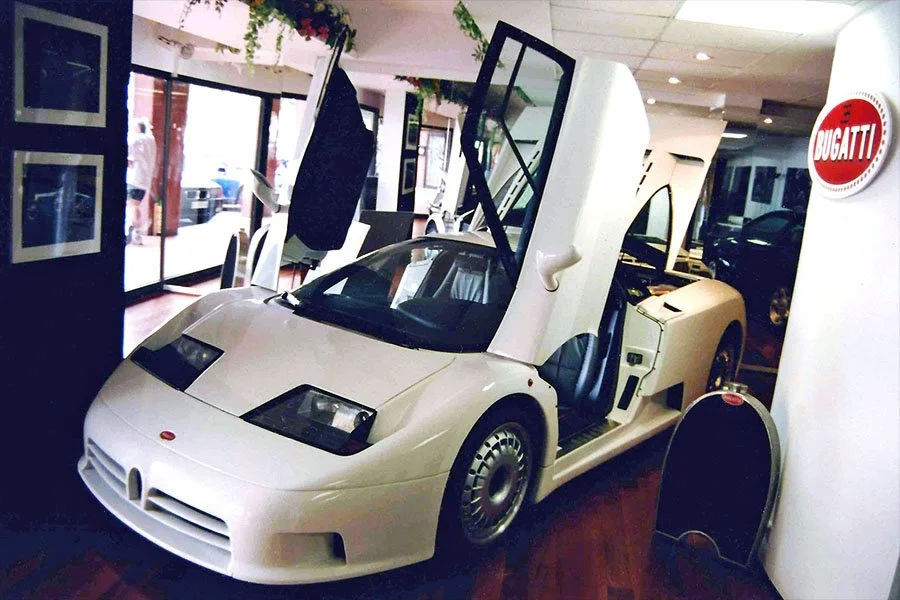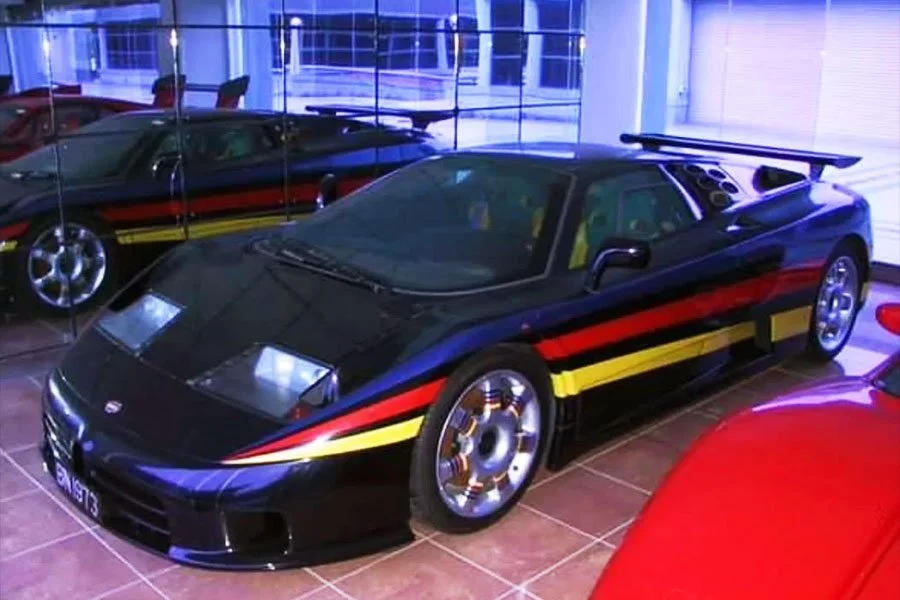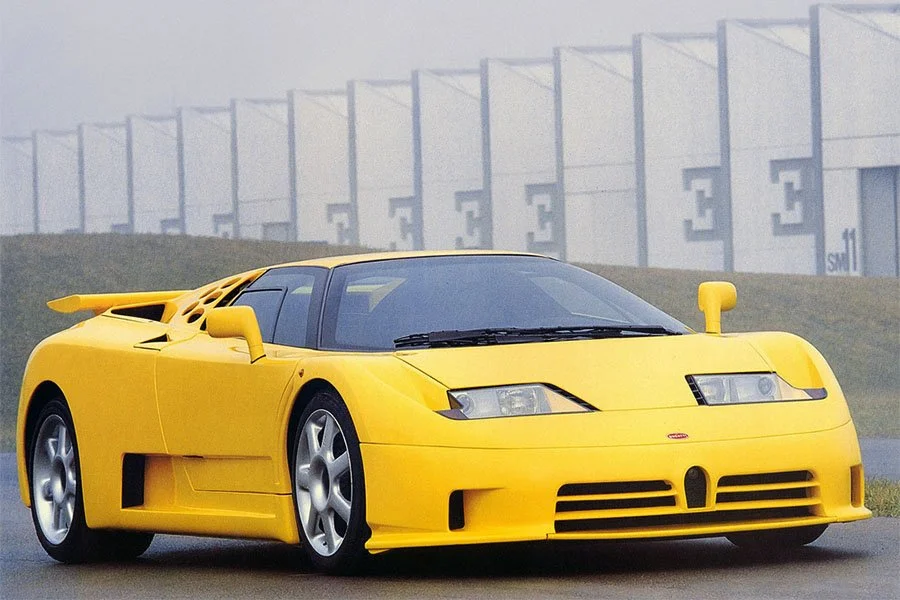Guide: Bugatti EB110 SS - a Historical & Technical Appraisal
/BACKGROUND
Following his acquisition of the Bugatti naming rights in 1987, Romano Artioli re-established the firm and built a state-of-the-art factory in Campogalliano, Italy.
Artioli also funded the development of a brand new model and the resultant EB110 GT was unveiled at a lavish celebration in Versailles during September 1991.
The first production EB110 GT was delivered in December 1992, by which time Bugatti had already previewed a lighter, more powerful variant that would be offered alongside.
Presented at the Geneva Motor Show in March 1992, the EB110 SS (variously known as the Super Sport and Sport Stradale) was 150kg lighter and had an extra 59bhp.
The SS was created for those customers who wanted a hardcore performance-oriented EB110.
In many respects, it was Bugatti’s rival for the McLaren F1.
Deliveries of both the McLaren F1 and EB110 SS began in late 1993.
At the time, the F1 and EB110 were the only production cars built around carbonfibre monocoques. Each was designed from scratch and used practically no off-the-shelf components. As a result, they justified a new price point in the marketplace. The F1 cost a staggering £640,000 while the £400,000 EB110 SS was a third more expensive than the original GT variant.
Unfortunately, by the time deliveries of the F1 and EB110 began, the global economy had turned sour.
By contrast, when they were given the green light in the late 1980s, the market for exotic and collectable motor cars was at an all-time high. A glut of manufacturers poured in but, when a worldwide recession began to take hold from late 1990, many firms were left with cars they couldn’t sell.
Buyers for the new generation of supercars from Bugatti and McLaren were thin on the ground.
Nevertheless, the F1 and EB110 represented a technological advancement over the previous generation of top flight machinery, namely the Ferrari F40 and Porsche 959.
ENGINE / TRANSMISSION
At the heart of the SS was an uprated version of Bugatti’s advanced 60° V12. Manufactured from a mix of exotic alloys, it incorporated dual overhead camshafts with five valves per cylinder, four turbochargers, dry-sump lubrication and Bugatti’s own multi-point electronic engine management.
Compared to the GT, the SS had the boost pressure of its four IHI turbos cranked from 1.05 to 1.2 bar.
It also came with a re-mapped ECU, larger injectors and less restrictive exhaust system.
The compression ratio was kept at 8.0:1.
Displacement stayed at 3499cc thanks to a bore and stroke of 81mm and 56.6mm respectively.
Whereas the GT variant produced 553bhp at 8000rpm, the SS motor pumped out 611bhp at 8250rpm.
It had a peak torque rating of 477lb-ft at 4200rpm compared to 451lb-ft at 3750rpm for the GT.
Power was transmitted permanently to all four wheels by a six-speed manual gearbox, all-wheel-visco lock and rear-mounted limited-slip differential. Torque distribution was 27:73 front to rear.
CHASSIS
Each SS was built around a standard EB110 carbonfibre tub designed by French state-owned rocket, satellite and aircraft manufacturer, Aerospatiale. Fabrication was handled by Composites Aquitaine.
Suspension was via independent double wishbones all round. Pullrod actuated spring / damper units were fitted at the front as per the GT. However, at the back, the SS used single instead of double spring / damper units per side.
Power-assisted steering was retained as was the GT’s switchable Bosch / Bugatti anti-lock brake system.
The GT’s 322mm cross-drilled and ventilated brake discs and four-piston Brembo calipers were also imported.
New Bugatti Type 55-inspired seven spoke BBS cast magnesium alloy wheels were fitted instead of the forged alloy rims used by the GT. Size-wise, they were the same on both cars: 18 x 9-inches at the front and 18 x 12.5-inches at the rear. Michelin Pilot SX tyres were OEM equipment.
As usual, a flexible FIA fuel tank was housed either side of the engine up against the rear bulkhead. Total fuel capacity was 120-litres.
BODYWORK
Much of the Super Sport’s 150kg weight-saving (and its higher price) was down to an array of lightweight carbonfibre body panels. These composite parts replaced the aluminium ones used by the GT and were bonded direct to the carbonfibre monocoque.
There were also a number of tell-tale visual differences between the two variants.
The SS came with a body coloured instead of gloss black B pillar complete with new vertical intake.
A distinctive new sail panel treatment featured porthole cooling scoops instead of the normal three quarter glass.
A fixed rear wing was fitted instead of the GT’s retractable spoiler.
INTERIOR
Although some SS were ordered with a GT specification interior, many were equipped with an array of special parts.
New equipment included a carbonfibre dash fascia, electric carbonfibre Recaro bucket seats with leather upholstery, four-point harnesses and a new three-spoke steering wheel.
Lightweight dimpled leather was used to trim the simplified transmission tunnel, the sills, sidewalls, rear bulkhead and floors.
Basic new door panels were upholstered with smooth leather and came with manual windows instead of electric.
Central locking, a sound system and air-conditioning were retained.
Instrumentation comprised a 10,000rpm tach flanked to the right by a slightly smaller 400kph speedometer. Off to the left was a combined oil pressure / oil temperature / water temperature gauge. A fuel read out and clock were located at the top of the central control panel.
WEIGHT / PERFORMANCE
At 1410kg, the SS was 150kg lighter than the GT.
Top speed went from 210mph to 217mph and the 0-62mph time dropped from 4.4 seconds to 3.3.
PRODUCTION
Prior to the delivery of the first customer cars, Bugatti completed seven EB110 SS prototypes, some of which came with seven sail panel portholes (instead of the five used on production variants) and a rear spoiler with inboard instead of outboard pylons.
Production started in the autumn of 1993. The three cars produced in 1993 were sold to the Brunei Royal Family. A fourth more highly customised example then also made its way out to Brunei in 1994.
Another famous customer was Michael Schumacher. Schumacher’s car was equipped with a mostly GT-spec. interior.
It is understood that three SS were retro-fitted by the factory with a 700bhp ‘Le Mans’ engine that featured cockpit-adjustable boost control.
Like the EB110 GT, SS production ended when Bugatti filed for bankruptcy in September 1995. By this time, 32 post-prototype SS variants had been completed.
DAUER EB110 S
In 1997, trustees auctioned off Bugatti’s final stock of partially completed cars and parts. Almost everything was bought by Jochen Dauer.
Dauer purchased several unused Aerospatiale carbonfibre tubs, scores of other parts and four partially completed EB110s.
Dauer went on to complete ten of these cars in Germany between 1999 and 2002.
Text copyright: Supercar Nostalgia
Photo copyright: Bugatti - https://www.bugatti.com


































